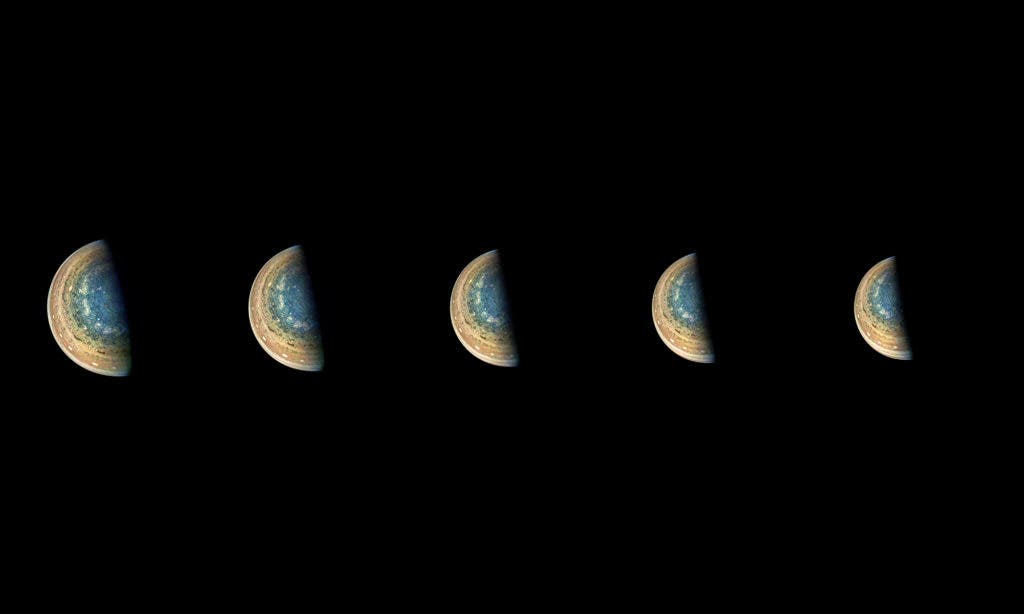Jupiter’s colorful bands or the gas giant’s huge Red Spot typically get all the attention but in a series of novel photos, NASA has finally captured a glimpse of a rare feature: Jupiter’s South Pole. We aren’t disappointed, that’s for sure!
Gas marble
When people think of Jupiter, they picture a colorful marble mainly painted in browns, reds, and off-whites. However, as images beamed back by the Juno spacecraft show, the gas giant is a lot more diverse when viewed from other angles. What immediately caught my eye were the beautiful blue swirling patterns, which resembles a mesmerizing iris.
NASA’s Juno spacecraft took the color-enhanced time-lapse sequence of images during its eleventh close flyby of the gas giant planet on Feb. 7 between 7:21 a.m. and 8:01 a.m. PST.
Although at first glance each picture in the series looks the same, there are slight differences between each image. The differences between the far left image and the far right image, for instance, are more immediately noticeable.
NASA’s Juno spacecraft arrived at the Jupiter system on July 4, 2016. Its mission is to study the planet in detail to give scientists a better idea of the gas giant’s weather, magnetic environment and formation history.
Juno is only the second long-term mission at Jupiter after the Galileo spacecraft, which orbited the planet from 1995 to 2003. The spacecraft’s two-year mission is scheduled to end in six months. NASA will either crash Juno into Jupiter or extend its mission with a new lease.











